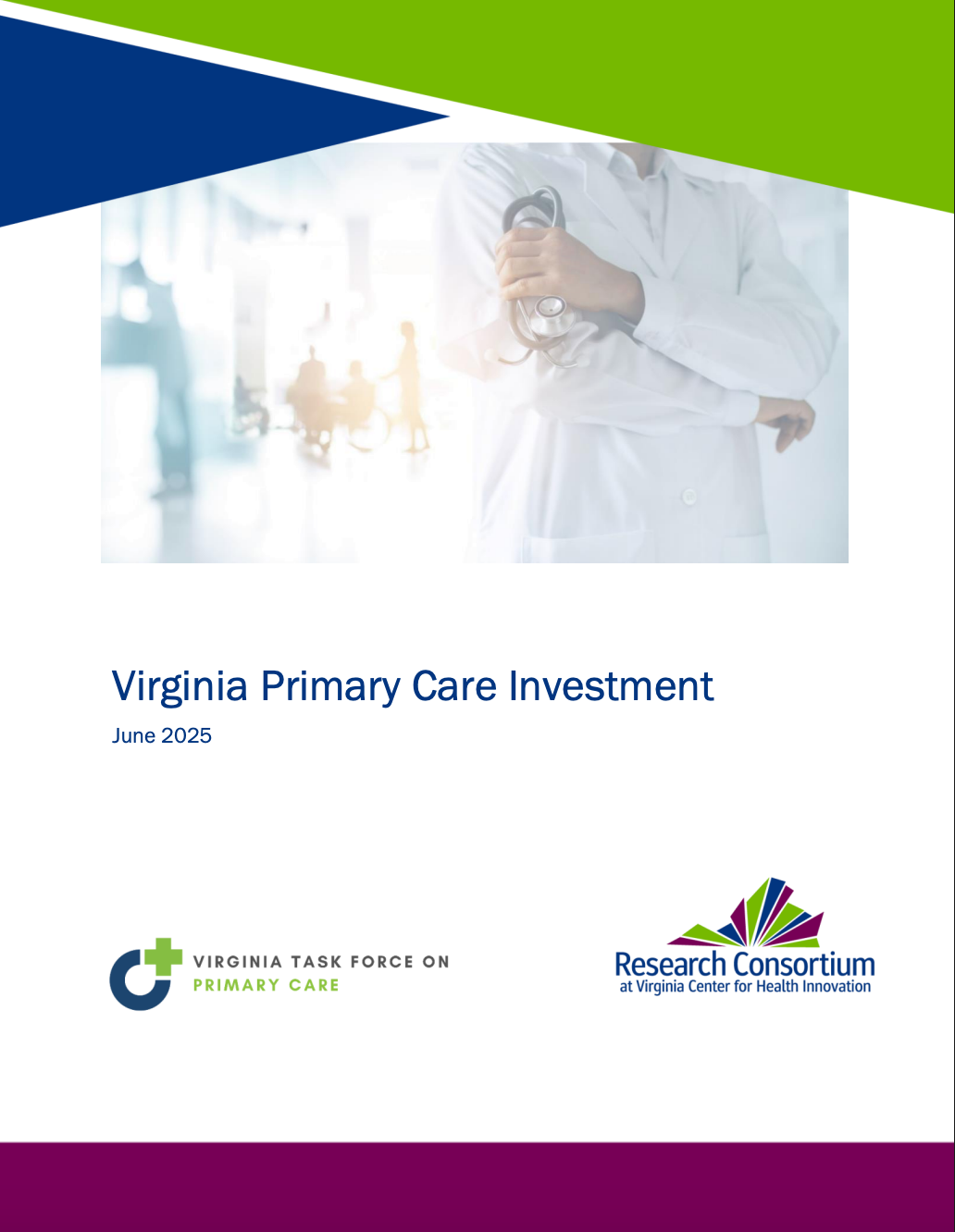
The Virginia Task Force on Primary Care is pleased to share its completed reports for SFY’25. The primary care investment report reflects information about primary care spend and utilization, including telehealth and behavioral health in primary care. The primary care scorecard provides interactive graphs and maps exploring Virginia’s spend, workforce, use, and outcomes. Together, these reports offer a comprehensive view of the health of Virginia’s primary care system.

Virginia Task Force on Primary Care SFY '26 Recommendations
The Virginia Task Force on Primary Care published eight recommendations for SFY ’26.

Virginia Primary Care Investment Report
This 2025 report, published on behalf of the Virginia Task Force on Primary Care, presents an inflation-adjusted, claims-based analysis of primary care investment across major payer types from 2019 to 2023 with estimates derived from the Virginia All-Payer Claims Database (APCD). This report is intended to inform state policy and guide future recommendations of the Task Force.
Primary care is foundational to a high-performing, cost-effective healthcare system— yet most states lack a consistent way to measure investment in the primary care ecosystem. To address this barrier, the Virginia Task Force on Primary Care publishes an annual Primary Care Investment Report to inform state policy and Task Force initiatives. Now in its fourth year, this report provides a longitudinal view of claims-based primary care investment in Virginia, using the Virginia All-Payer Claims Database (APCD) (see Appendix A for methodology). The findings in this report represent inflation-adjusted spending trends across commercial, Medicaid, and Medicare markets, offering policymakers, payers, and provider leaders with actionable insight into the health of the primary care ecosystem and trends in expenditures.

Virginia Primary Care Scorecard
Key findings include:
• Virginia spent 2.1 to 3.9% of total healthcare dollars on primary care, lower than the previous year.
• 13.7 to 45.5% of localities in Virginia lack a sufficient number of primary care physicians.
• 33.1 to 43.7% of insured Virginians utilized primary care services, with variation by payer type and locality.
• Quality of life decreased overall in Virginia and 93 localities are worse than the national average.
A robust primary care infrastructure has been shown to improve the health and well-being of populations. VTFPC defines primary care using a narrow definition and abroad definition. the Task Force established a 4-quadrant approach to defining primary care based on a narrow and broad set of services and provider types. Only the broadest and most narrow definitions are reported here to provide the full range of estimates. The narrowest definition is based on physician-led preventive services. The broadest definition includes all outpatient and professional services performed by primary care physicians, advanced practice practitioners (APPs), OBGYNs, School Health Clinics, Rural Health Centers and Federally-Qualified Health Centers (FQHCs).